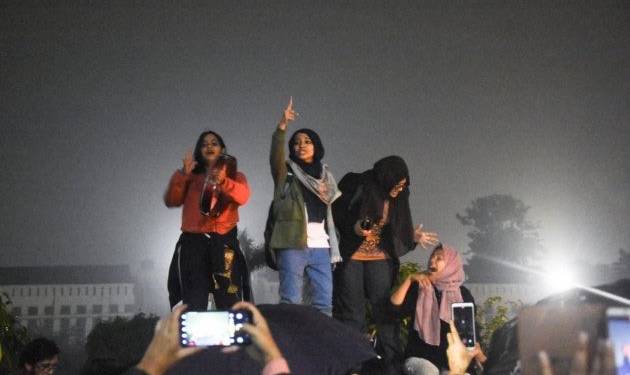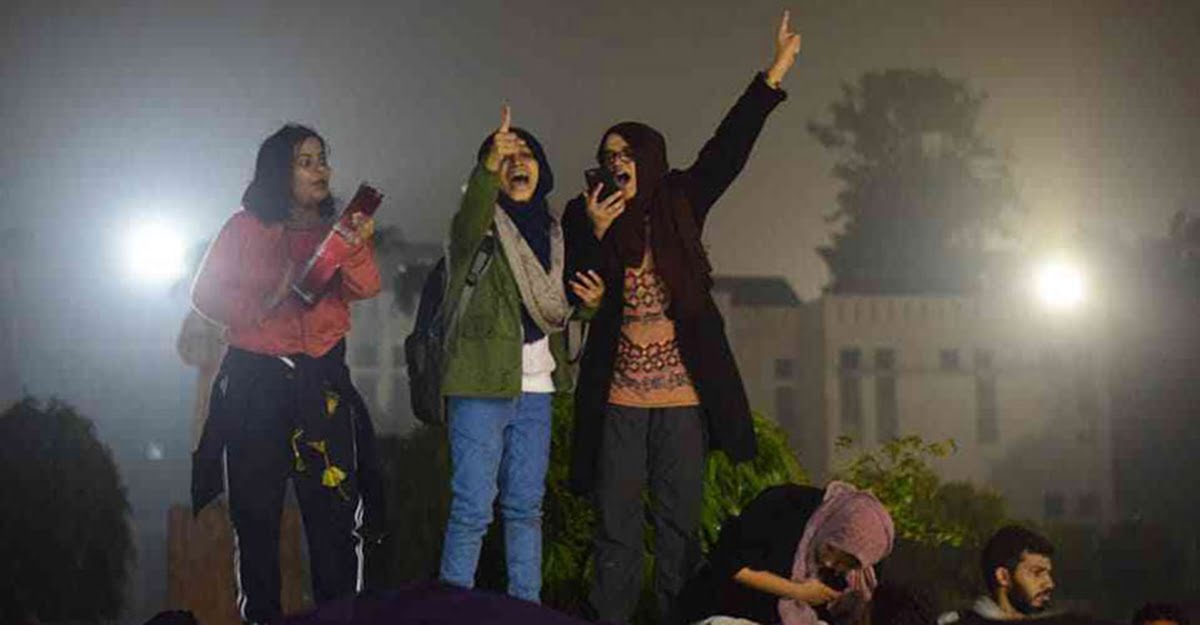The hijab never ceases to be out of controversy. From France to Karnataka, this headcloth and its other forms and variations continue to make headlines and has captured the imagination of an entire nation at a time when more pressing issues, such as India’s slip to 140 among 150 countries in Global Gender Gap Report of 2021, requires our attention. Compounded with the disastrous impact of COVID-19, the women’s labour force participation in India has significantly declined especially in the professional and technical fields and remains alarmingly low at the senior and managerial positions. With 101st rank in global hunger index and an ever-widening gap between the poor and the rich, it’s nothing short of a farce that hijab gains currency amidst rising inflation. The United States Commission on International Religious Freedom (USCIRF) 2021 has blacklisted India, now twice, in religious freedom. Labelling India as a “country of particular concern” with “egregious religious freedom violations”, India has been recently declared to be on the brink of genocide by Gregory Stanton, the founder and director of Genocide Watch.
Also read: Karnataka Hijab Row: Clothing, Secularism And A Nation In Danger
Hijab And Public order
The recent row over the hijabs in Karnataka seems to be in line with the humiliating Sulli Deals and its shameful sequel Bully Bai. Whether it is online auctioning of Muslim women with derogatory slurs by hacking their personal pictures and details or demanding a ban on hijab, one can sense a sustained attack on Muslim women in India for their apparent Muslim-ness and related visibility.
The Karnataka government’s order prohibiting clothes that “disturb equality, integrity and public law and order” is a curtailed attempt to legalise the ban on hijab by providing ammunition to communal sentiments. Meanwhile, hate speeches and call for genocide have failed to extract such prompt response from the government. Shutting down of educational institutes over hijab is like the theatre of absurd without any comic relief. Legally, hijab is part of practicing one’s religion and this clearly falls under the ambit of the fundamental right protected under Article 25 of the constitution, declared as: “All persons are equally entitled to freedom of conscience and the right to freely profess, practice, and propagate religion subject to public order, morality and health.” Now whether this practice is mandatory, obligatory or optional in Islam cannot take away the merit of the case. Prescribed uniforms to the schools or colleges should be sensitive and accommodative to the sentiments that have been traditionally counterproductive to the girl child education.
Also, the constant preoccupation with the female bodies needs to be challenged. The images of hijab-clad girls not being allowed to enter the college in Karnataka versus the sloganeering saffron shawls donning girls, is how women’s bodies are yet again weaponised for political gains. Men’s sartorial preference rarely calls for debates. The turbans worn by the Sikh men can never be imagined to disturb the peace and harmony of the nation because it’s always the bodies of women that are site of contest, which needs to be dictated, domesticated or banned. Patriarchal institutions are used to fix the bodies of women, sometimes it’s their hijab, sometimes it’s ripped jeans or short skirts. It is interesting to note that hijabs are countered by saffron shawls, which have no historic comparison.
Patriarchal institutions are used to fix the bodies of women, sometimes it’s their hijab, sometimes it’s ripped jeans or short skirts. It is interesting to note that hijabs are countered by saffron shawls, which have no historic comparison.
While covering head as a mark of respect and modesty is not alien to Indian society and culture and is still widely practiced in rural India, protesting it with saffron shawls is to draw communal contours by strategically excluding a community from accessing education which has the lowest literacy rate as a religious group.
While covering head as a mark of respect and modesty is not alien to Indian society and culture and is still widely practiced in rural India, protesting it with saffron shawls is to draw communal contours by strategically excluding a community from accessing education which has the lowest literacy rate as a religious group. According to the UNDP (United Nation Development Programme) and Global Multidimensional Poverty Index, Muslims are far worse affected in multi-dimensional aspects such as poverty, nutrition, health and education. Increasing the legal marriage age for women on paper will hardly help when the cultural, religious and gendered stereotypes are propagated and promoted on the ground. If a young Muslim girl is heckled and not allowed to enter the college to submit her assignment, the objectives of ‘beti bachao, beti padhao’ will remain elusive.
Hijab And Muslim Women
Western countries have long seen hijab as an oriental symbol of oppression and their moral obligation to liberate harassed Muslim women from cloak of imprisonment. Lila Abu Lughod argues that the US military invasion of Afghanistan was ethically justified to liberate and rescue burqa-clad Muslim women from the Taliban. Muslim women, thus, became a prime mover for this decades-long unsuccessful military rule which ended in absolute failure with no respite for Muslim women.
However, the resurgence of young hijabis needs to be studied. The hijab has seen a evolution from being a ‘portable seclusion’ and ‘mobile homes’ signifying the sanctity of womanhood to a more westernised fashion element and validation of an identity which has been existentially threatened and remained under siege. Today, hijab has moved beyond the personal and has acquired the characteristic of self-assertion for Muslim women. As a post-colonial critique of Enlightenment, hijab could be argued as the decolonial signifier of “self”.
Intriguingly, women in Iran voluntarily took up veiling to protest against the western ways of Reza Shah Pehalvi after his ‘Kashf-e hijab’ (banning hijab) in 1936 and many took to streets against the hijab after the 1979 Islamic Revolution and its mandatory Islamic dress code. Thus, the discussions surrounding hijab needs to be more nuanced with context differentiated analysis and it is imperative that we resist the reductive interpretation of hijab and burqa as a universal and archetypal sign of Muslim women’s oppression.
Intriguingly, women in Iran voluntarily took up veiling to protest against the western ways of Reza Shah Pehalvi after his ‘Kashf-e hijab’ (banning hijab) in 1936 and many took to streets against the hijab after the 1979 Islamic Revolution and its mandatory Islamic dress code. Thus, the discussions surrounding hijab needs to be more nuanced with context differentiated analysis and it is imperative that we resist the reductive interpretation of hijab and burqa as a universal and archetypal sign of Muslim women’s oppression.
Also read: Why Muslim Women Wearing Hijab Might Be The Face Of Resistance


Muslim Women under attack
Islamophobia coupled with misogyny has rendered young educated Muslim women more vulnerable than ever. The Hindutva smear and terror campaign has been working to stifle their voices and silence them. Sulli deals and Bulli Bai apps strategically attacked strong Muslim women who widely shared their dissenting opinions. However, one cannot dismiss the courage and determination of these young vilified Muslim women who refused to be intimidated. The new generation of Muslim women have examples like Muskan, Aysha and Ladeeda to look up to, who are acutely aware of their Muslimness as an identity they assert with pride in a country rife with communal tensions.
Featured image source: OnManorama
About the author(s)
Dr. Amina Hussain is working as an Assistant Professor at Khwaja Moinuddin Language University with the Department of English and Modern European and Asian Languages, Lucknow. She has also taught as an Assistant Professor at Amity University, School of Languages, Lucknow. Recipient of a Medal and Certificate of Merit for securing first position in Sri Venkateswara College, Delhi University in M.A (English Hons). She has also been a UGC-NET-JRF (Junior Research Fellow) with the University of Lucknow, Uttar Pradesh.





I read an article in FII about how regressive karva chauth, ghoongat is. How can they they give space for women who defends hijab which is a symbol of patriarchy.
Does FII really want to fight patriarchy only in Hinduism or does it care about Islamic patriarchy.
This is a serous matter as this shows that FII is biased towards certain religion which can damage its reputation.
Mr. Girish, what symbol of patriarchy? Miniskirts, shorts, skimpy tops, sarees and lehngas with small blouses, and revealing dresses are not a choice. They are advertised in movies, music videos, serials, magazines, billboards, advertisements, etc. to the point where girls feel it is normal to dress in revealing attire. This is systematic brainwashing.
Ma Shaa Allah, a good post on the current situation of controversy matter of hijab, an explicit share of what is happening with the secular country India. I support Islamic Feminism.